Paint rollers are essential tools in the world of painting. They paint large surfaces such as walls, ceilings, and floors. Rollers come in different types and sizes, each suited for a specific purpose. In this article, we’ll compare two popular types of rollers – foam and fabric- and discuss their differences.
Foam Paint Rollers

Foam paint rollers are made of foam material and come in various sizes and densities. They are famous for painting smooth surfaces such as cabinets, doors, and trim. Foam rollers are available in two types: open-cell and closed-cell foam.
Open-cell foam rollers have larger pores, making them more absorbent. They are ideal for applying paint on rough surfaces such as stucco or textured walls. The open-cell foam absorbs the paint and releases it evenly as you roll it onto the surface. However, open-cell foam rollers may not be suitable for surfaces that require a smooth finish since they leave a stippled texture.
Closed-cell foam rollers have smaller pores, making them less absorbent. They are ideal for painting smooth surfaces such as drywall and wood. Closed-cell foam rollers provide a smooth finish and are suitable for oil-based and latex paints. They are also easy to clean and reusable.
Advantages of Foam Rollers
- Absorbent: Foam rollers are highly absorbent, making them ideal for rough surfaces that require more paint.
- Easy to Use: Foam rollers are easy to use and require less effort to achieve a smooth finish.
- Durable: Foam rollers are durable and can be reused multiple times.
- Suitable for different types of paint: Foam rollers are suitable for oil-based and latex paints.
Disadvantages of Foam Rollers
- Limited to smooth surfaces: Foam rollers are not ideal for surfaces that require a smooth finish since they leave a stippled texture.
- Less coverage: Foam rollers have less coverage than fabric rollers, so you must reload them more frequently.
Fabric Paint Rollers

Fabric paint rollers are made of mohair, lambswool, polyester, and nylon. They come in different sizes and textures and are suitable for painting large surfaces such as walls, ceilings, and floors.
Mohair rollers have a smooth finish and are suitable for oil-based paints. Lambswool rollers have a thick pile and are ideal for textured surfaces like stucco or brick. Polyester and nylon rollers are suitable for oil-based and latex paints and provide a smooth finish.
Advantages of Fabric Rollers
- Smooth finish: Fabric rollers are smooth and ideal for surfaces requiring a uniform texture.
- Large coverage: Fabric rollers have a large area, so you can cover more surface area without reloading the roller frequently.
- Long-lasting: Fabric rollers are long-lasting and can be reused multiple times.
Disadvantages of Fabric Rollers
- Less absorbent: Fabric rollers are less absorbent than foam rollers, so you must reload them more frequently.
- Difficult to clean: Fabric rollers are difficult to clean and may require more effort to remove paint residue.
Foam Paint Rollers vs Fabric Paint Rollers
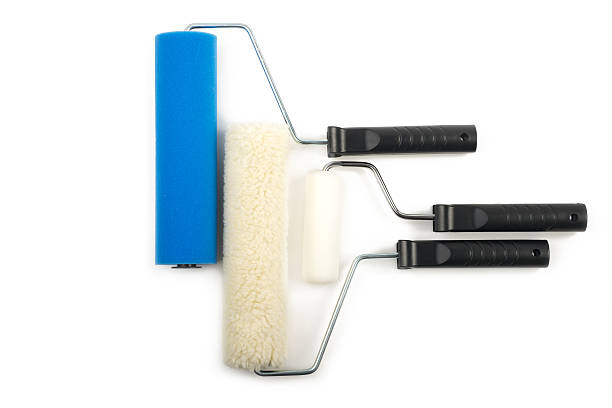
Now that we’ve discussed the advantages and disadvantages of foam and fabric rollers let’s compare them.
- Absorbency: Foam rollers are more absorbent than fabric rollers, making them ideal for rough surfaces that require more paint. Fabric rollers are less absorbent and require more reloading, making them ideal for larger surfaces.
- Smooth Finish: Fabric rollers are smooth and ideal for surfaces requiring a uniform texture. Foam rollers leave a stippled texture, making them less suitable for surfaces that require a smooth finish.
- Coverage: Fabric rollers have a larger coverage area than foam rollers, so you can cover more surface area without reloading the roller frequently.
- Durability: Both foam and fabric rollers are durable and can be reused multiple times.
- Ease of Use: Foam rollers are easier to use than fabric rollers, requiring less effort to achieve a smooth finish.
- Compatibility: Foam rollers are suitable for both oil-based and latex paints, while fabric rollers are more limited in their compatibility.
- Cleaning: Foam rollers are easier to clean than fabric rollers, which can require more effort to remove paint residue.
Choosing the Right Paint Roller for Your Project

To choose the right paint roller for your project, you can consider the following factors:
- Surface type: A foam roller may be more suitable for painting smooth surfaces like cabinets or doors. A fabric roller may be better for painting a textured surface, such as stucco or brick.
- Paint type: Consider the type of paint you’re using. Foam rollers are suitable for both oil-based and latex paints, while fabric rollers are more limited in their compatibility.
- Finish: Consider the finish you want to achieve. A fabric roller may be more suitable if you want a smooth finish. A foam roller may be better if you’re not concerned about a stippled texture.
- Coverage: Consider the size of the surface you’re painting. If you’re painting a large area, a fabric roller may be more suitable since it has a larger coverage area.
Both foam and fabric rollers have their advantages and disadvantages. Foam rollers are more absorbent and easier to use, making them ideal for rough surfaces.
Fabric rollers have a smooth finish and a larger coverage area, making them ideal for larger surfaces.
It’s also worth noting that other types of rollers are available, such as microfiber rollers and speciality rollers designed for specific purposes. So, don’t be afraid to explore different options and experiment to find the best roller for your project.
Tips for Using Foam and Fabric Paint Rollers
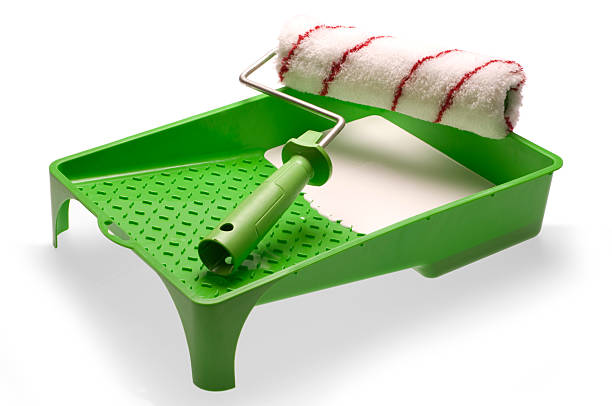
- Use the Right Technique: When using a roller, it’s essential to use the proper technique to achieve a smooth finish. For foam rollers, apply even pressure and use a back-and-forth motion to distribute the paint evenly. For fabric rollers, use a “W” or “V” pattern to apply the paint and then roll over the area to smooth out any texture.
- Load the Roller Properly: Loading the roller properly is essential to achieve the best results. For foam rollers, dip the roller into the paint and then roll it back and forth on the tray to remove any excess paint. For fabric rollers, dip the roller into the paint and then roll it back and forth on the tray to distribute the paint evenly.
- Use Multiple Coats: For a professional-looking finish, it’s often necessary to apply multiple coats of paint. Be sure to allow each coat to dry completely before applying the next coat.
- Clean the Roller Properly: To extend the life of your roller, it’s essential to clean it properly after each use. For foam rollers, rinse the roller with warm water and squeeze out excess water. For fabric rollers, rinse the roller with warm water and then use a mild detergent to remove any paint residue. Rinse thoroughly and then allow the roller to air dry.
- Store the Roller Properly: To prevent the roller from drying out or becoming damaged, it’s essential to store it properly. For foam rollers, wrap the roller in plastic or a plastic bag and store it in a cool, dry place. For fabric rollers, wrap the roller in plastic or a plastic bag and store it in a cool, dry place.
By following these tips, you can achieve a professional-looking paint job and extend the life of your foam or fabric roller.
In conclusion, foam and fabric rollers both have their advantages and disadvantages. When choosing a roller, consider the surface, paint, finish, and coverage area to determine which roller type suits your project. By using the proper technique, loading the roller properly, using multiple coats, cleaning the roller properly, and storing the roller properly, you can achieve a professional-looking paint job and extend the life of your roller.
FAQs about Foam and Fabric Paint Rollers
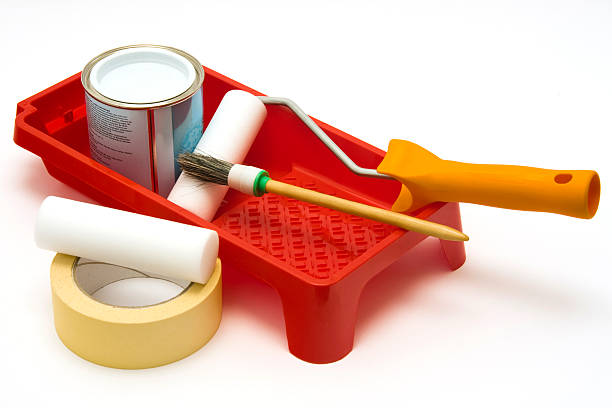
- Can I use a foam roller for a smooth finish?
Yes. Foam rollers can achieve a smooth finish, especially on rough surfaces. However, they may leave a stippled texture on smoother surfaces.
- Can I use a fabric roller for a rough surface?
Yes, fabric rollers can be used on rough surfaces, but they may not be as effective at covering the surface as foam rollers. Fabric rollers are better suited for larger surfaces that require a smooth finish.
- Can I use a foam roller for oil-based paint?
Yes, foam rollers are suitable for both oil-based and latex paints. However, they may need to be cleaned with mineral spirits or paint thinner after use with oil-based paint.
- Can I reuse a foam or fabric roller?
Yes, both foam and fabric rollers can be reused multiple times. Be sure to clean them properly after each use and store them in a cool, dry place.
- How do I clean a foam or fabric roller?
For foam rollers, rinse the roller with warm water and squeeze out excess water. For fabric rollers, rinse the roller with warm water and then use a mild detergent to remove any paint residue. Rinse thoroughly and then allow the roller to air dry.
- Can I use a foam or fabric roller on textured walls?
Yes, foam and fabric rollers can be used on textured walls. Foam rollers are better suited for rough surfaces, while fabric rollers are better suited for larger surfaces that require a smooth finish.
- How do I know which roller to use for my project?
Consider the surface, paint, finish, and coverage area to determine which roller type is more suitable for your project. Foam rollers are ideal for rough surfaces that require more paint, while fabric rollers are suitable for large surfaces that require a smooth finish.
8. Can I use a foam or fabric roller for painting furniture?
Yes, foam and fabric rollers can be used for painting furniture. However, choosing the right roller is essential based on the type of furniture and the finish you want to achieve. Foam rollers are ideal for rough surfaces or furniture with intricate details, while fabric rollers are suitable for larger surfaces.
9. Can I use a foam or fabric roller for painting cabinets?
Yes, foam and fabric rollers can be used for painting cabinets. However, choosing the right roller is essential based on the type of cabinets and the finish you want to achieve. Foam rollers are ideal for rough surfaces or cabinets with intricate details, while fabric rollers are suitable for larger surfaces.
10. How many coats of paint should I apply with a roller?
Applying multiple coats of paint with a roller is often necessary for a professional-looking finish. Be sure to allow each coat to dry completely before applying the next coat.
How to Clean and Maintain Your Paint Rollers
When cleaning and maintaining your rollers, foam and fabric rollers require proper care to extend their life. After use, rinse the roller with warm water and allow it to dry completely before storing it. Remove any excess paint before cleaning, making the cleaning process more manageable.
In summary, foam and fabric rollers have unique qualities that make them ideal for different painting projects. Foam rollers are great for rough surfaces and creating texture, while fabric rollers are better suited for large, flat surfaces that require a smooth finish. By choosing the right roller for your project and taking proper care of it, you can achieve a professional-looking paint job that will last for years.
It’s important to note that while foam and fabric rollers have their strengths, they also have limitations. For example, foam rollers may leave air bubbles or produce a stippled finish, which may not be suitable for some projects. On the other hand, fabric rollers may leave roller marks or produce a paint streak if not used properly.
To avoid these issues, it’s essential to choose the right roller for your project, use the correct technique, and apply multiple coats of paint if necessary. Additionally, be sure to choose high-quality rollers and avoid using old or worn-out rollers, as this can affect the quality of the finish.
Foam and fabric rollers are helpful for painting projects but have unique characteristics and the best applications. By understanding the differences between these rollers and choosing the right one for your project, you can achieve a professional-looking finish lasting years. Remember to take proper care of your roller, use the correct technique, and apply multiple coats of paint if necessary to achieve the best results. With these tips and tricks, you can become a pro at using foam and fabric rollers and achieve great results on all your painting projects.
Other Types of Rollers
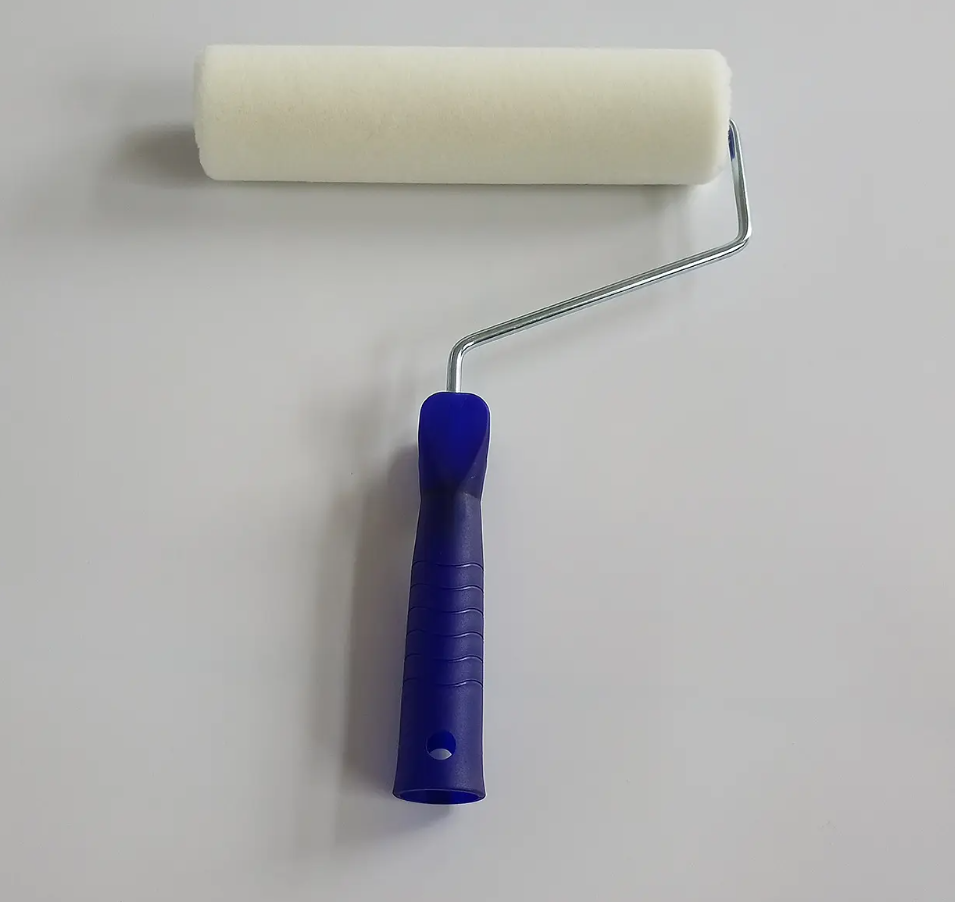
It’s also worth noting that other types of rollers on the market offer different advantages and disadvantages. For example, microfiber rollers are becoming increasingly popular because they hold more paint and produce a smoother finish than fabric rollers. Additionally, mohair rollers are great for achieving a smooth finish but are often more expensive than other rollers.
It’s also important to note that rollers are not the only tool you’ll need for painting projects. Depending on the project, you may also need brushes, drop cloths, painter’s tape, and other supplies. Planning and ensuring you have all the necessary supplies before starting your project is essential.
In addition to traditional rollers, specialised rollers are available for specific applications. For example, textured rollers can be used to create patterns or designs on walls and foam trim rollers are designed to make painting edges and corners easier. These specialized rollers can be an excellent option for specific projects, but they may not be necessary for every project.
In summary, the differences between foam and fabric rollers are primarily in their texture and finish and their suitability for different surfaces and types of paint. Foam rollers are great for creating texture and are better suited for rough surfaces, while fabric rollers are better for achieving a smooth finish on large, flat surfaces. Choosing the right roller for your project requires careful consideration of your surface, paint type, and personal preferences. Following the tips and techniques outlined in this article, you can achieve a professional-looking finish on all your painting projects.
Get High-quality Paint Rollers from Paintbrusha
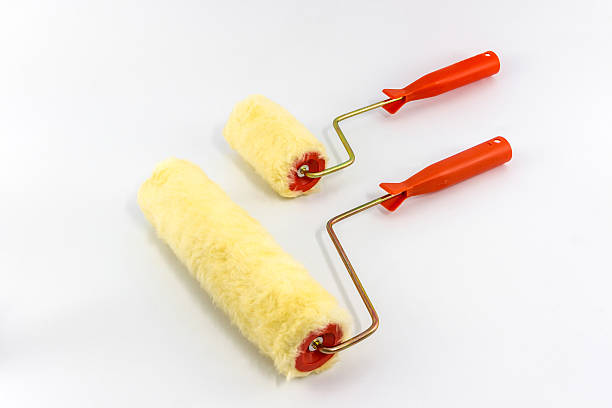
Painting can be a fun and creative activity, but it can also be a messy and frustrating experience if you don’t have the right tools. A high-quality paint roller can make all the difference in achieving a professional-looking finish. That’s where Paintbrusha comes in. As a professional paint roller manufacturer for 35 years, Paintbrusha is dedicated to providing customers with high-quality paint rollers that make painting a breeze.
When it comes to painting, the quality of your paint roller can make a big difference in the final result. A low-quality roller can leave streaks, bubbles, and uneven coverage, while a high-quality roller can create a smooth and even finish. Paintbrusha’s rollers are designed with precision and care to ensure that each stroke delivers the right amount of paint to the surface, making it easy to achieve a professional-looking finish.
One thing that sets Paintbrusha apart from other paint roller manufacturers is our commitment to quality. We use only the finest materials to create rollers, including high-density foam, microfiber, and woven fabrics. These materials are carefully selected for their durability and ability to hold and distribute the paint evenly. The result is a paint roller that is both easy to use and produces stunning results.
Paintbrusha offers various paint rollers to suit different needs and preferences. Our rollers come in various sizes and materials, including foam, microfiber, and woven fabric rollers. Foam rollers are great for smooth surfaces like walls and ceilings, while microfiber rollers are ideal for rough surfaces like concrete and brick. Woven fabric rollers are versatile and can be used on various surfaces, making them a great all-around choice.
In addition to our high-quality rollers, Paintbrusha offers a range of accessories to make painting even more accessible. We have everything you need to complete the job, from roller frames to tray liners. Our accessories are designed to work seamlessly with our rollers, ensuring you have the right tools for the job.
If you’re looking for a high-quality paint roller, look no further than Paintbrusha. Years of experience and commitment to quality make us a trusted name in the painting industry. Whether you’re a professional distributor or a brand owner, our rollers and accessories will surely make your painting project business successful. So why wait? Get a Paintbrusha roller today and see the difference for yourself!

